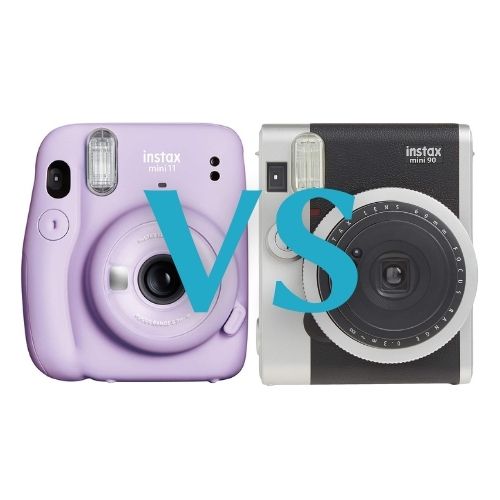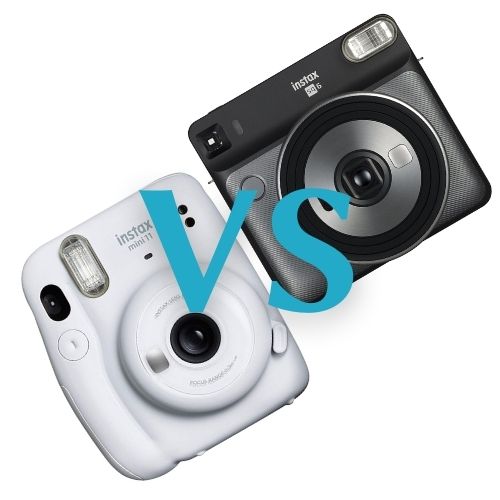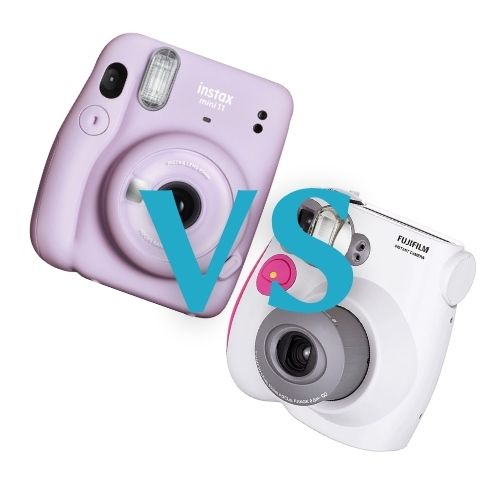
Popular electronics brand Fujifilm released 2 apparently similar cameras, the Instax Wide 210 and the Wide 300. If you are considering purchasing a new camera and both of these 2 models interest you, read on for a comparison in order to learn where are they similar, and most importantly, where are they different.
Common features
There are certain features that can be encountered in both these devices, such as the following:
- they both lack the slow-motion effect
- they use a zoom lens type
- they lack a lens cover
- both have the same shutter speed, set between 1/64 and 1/200s
- they share the same 3 meter flash range
- both use the ISO 800 speed film cartridges, with the photos measuring 3.4 x 4.25 inches, almost the same size as the old Polaroid photos
- none of these cameras are digital
Beside these important similarities, there are also smaller details like both cameras being available in black, the same optical TTL viewfinder, brightness adjustment levels, and a built-in flash.
It should be noted that both models use the same type of AA batteries, and you need 4 of them for either model. You should be warned that the coils are all set on the same side, in the battery compartment, but there’s an indication of how the batteries must be inserted, in an alternate position.
[content-egg module=Amazon template=custom/simple_list next=1]What makes them different
Although the 210 shares some common traits with the 300, there are some features that set them apart. These differences can make you either love or hate these cameras.
Their design
The Instax Wide 210 was released before the 300 model and is actually Fujifilm’s first wide camera, so it looks older when compared. At first sight, these cameras seem to have the same weight however the 210 model is slightly lighter, weighing 610 grams while the 300 weighs 612 grams.
Their dimensions are not exactly identical either, with the wide 210 measuring 178.5 x 117.5 x 94.5 mm and the other model, 167.8 x 94.7 x 120.9 mm. Overall the former device looks smooth, chunkier, and curvier compared to the sharp and clean angles of the Wide 300, which gives it a box-like appearance. Not many people seem to like the look of the Wide 300, preferring the Wide 210 instead.
Tripod socket
The tripod is very useful for those who don’t have a steady hand, or for taking a group picture and there’s nobody available to operate the camera. Those who need the tripod for these or any other situation should consider the Wide 300 camera, for the Wide 210 lacks it.
[content-egg module=Amazon template=custom/simple_list next=1]Their viewfinder
While both cameras feature a viewfinder to better frame the pictures, there’s a difference between them. For starters, the Wide 210 uses an optical viewfinder while the Instax Wide 300 uses a real image finder of 0.37 x, with a target spot.
The viewfinder on the Wide 300 model is a bit difficult to work with for those who need to wear sight correction glasses at all times. Users of the older model didn’t complain about this feature.
People using both cameras also complained about their viewfinder. On the older model, the viewfinder seems pretty useless if you want to take a vertical photo, as the top part gets cut off. With the newer model, its viewfinder is not really reliable for close-up pictures. This is because the lens and the viewfinder are not close to the other, and in very close photos this feature is crucial.
Exposure controls
Having exposure settings is important for those who care about what their pictures look like. The Instax Wide 210 doesn’t have such controls, but they have been added to the Wide 300. However, there are just two options to choose from: high and low. Additionally, still related to the exposure, the older model has only an automatic mode. The newer model has an automatic mode and a program mode.
It has been noted that both cameras seem to overexpose the images, with the flash. The Wide 210 was noted to take better pictures outdoors, especially when the subject is darker in color, and this includes folks with a darker complexion as well.
Power button
If the cameras are off, you can’t take any pictures. The on/off button is on the side of the Wide 210 and is colored red. The power button on the Wide 300 is trickier to find as it is around the shutter button, like a ring that must be pulled clockwise to turn the camera off. This can pose issues if one presses it incorrectly as they can turn the camera off instead, or turn it in of by mistake.
Other buttons
The Instax Wide 210 has buttons for the flash, for the focus range, and for light conditions. There’s also a button that allows you to choose the distance for the focus. These buttons are on the side of the camera. The shutter button is on the front, close to the lens. In total, there are 5 buttons.
The Instax Wide 300 has fewer buttons, as they can control several functions, one of which was mentioned above. Additionally, there’s a flash button and the exposure control button, for a total of 3 buttons. As mentioned the power button is close to the lens, while the other 2 are on the back of the camera. The focus distance on this model is changed with a ring around the lens instead of a button.
Some last thoughts
Based on each camera’s particular features, we can say the quality of the pictures taken with the 210 is the same as the 300. Given that the Instax Wide 300 also has a somewhat better control layout, it might be a better option when shopping for a new camera.
You should know that these cameras are the closest to the old Polaroid machines, at an affordable price. Hopefully, this review gave the info you needed to choose the model that is most suitable for you!









